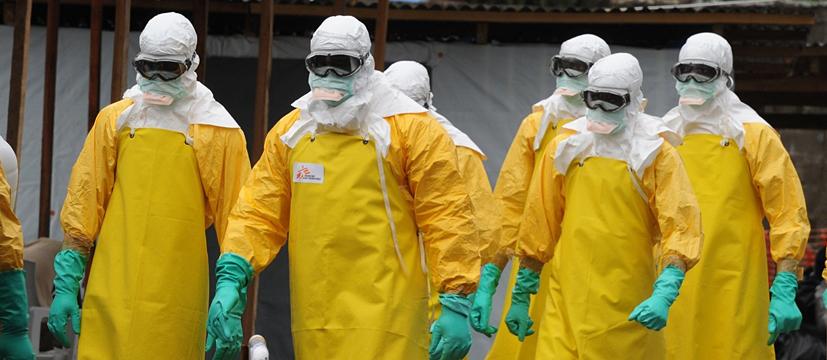PANDEMIC PREPARATION

 BY SHERRY LUO – As much as the pandemic has been popularized through film, games, and literature, there are few who are prepared to deal with and withstand such an elusive reality. The word “pandemic” brings to mind several images: quarantines, dehumanizing disarray, complete breakdown of society. While these images are an exaggeration of the world’s worst fears and many of the current generation do not yet have a grasp on what the implications of a pandemic are, they are a reminder of what society should aim to avoid.
BY SHERRY LUO – As much as the pandemic has been popularized through film, games, and literature, there are few who are prepared to deal with and withstand such an elusive reality. The word “pandemic” brings to mind several images: quarantines, dehumanizing disarray, complete breakdown of society. While these images are an exaggeration of the world’s worst fears and many of the current generation do not yet have a grasp on what the implications of a pandemic are, they are a reminder of what society should aim to avoid.
There have been quite a number of notable pandemics and epidemics in history. The most famous are those involving the plague. The Black Death for example, reduced England’s population by half. Cholera has claimed tens of millions, which is nothing compared to the hundreds of millions that smallpox has been responsible for. Measles, tuberculosis, malaria, yellow fever, typhus. While none of the names of these diseases may have appeared in recent contexts, those in the current generation will definitely be familiar with such viruses as Zika and Ebola, diseases that still have the world in a grip of panic.
Several viruses have pandemic potential, including coronavirus, which causes severe acute respiratory syndrome (SARS), and influenza virus, which was responsible for millions of infections and deaths worldwide in a pandemic outbreak in 1918, 1957, 1968, and the H1N1 outbreak in 2009. Since the late 1900s, the number of worldwide outbreaks has tripled, and because of global traveling and communication, contagions can spread far more easily and quickly than they used to.
Pandemics not only have consequences on global health, but they also have economic, and societal impacts that are inevitably connected by nature. For example, if sectors controlling water and electricity are not functioning properly, not only will that affect individual neighborhoods and businesses, but it will also affect the healthcare sector, leading to the inertia of disaster and chaos in the situation of a pandemic. The economic costs of a pandemic are great. In the 21st century alone, it is predicted that pandemics will cost the global economy over $6 trillion. Without proper contingency plans and policies, countries can suffer from effects of even greater severity. Preparation for an unlikely event may seem excessive, but as the saying goes, “better be safe than sorry.”
While such events can expose previously unseen vulnerabilities in public health capacities on a global, national, and local scale, they can also bring to light deficiencies in research, knowledge, policies, and communication. Only a handful countries have bothered to go through multiple evaluations, internal and external, of pandemic readiness. In total, there are six: the United States, Finland, Saudi Arabia, Eritrea, Pakistan, and Tanzania. The Center for Disease Control and Prevention (CDC), the World Health Organization (WHO), and the World Organization for Animal Health are making efforts to increase pandemic preparedness. The WHO has compiled and created a compendium of documents detailing a framework of how to best deal with pandemics. This comprehensive framework lays down five key principles: a whole-of-society approach, preparedness at all levels, attention to critical interdependencies, scenario-based responses, and respect for ethical standards. Without any one of these principles, societal collapse is imminent. It may seem easy to maintain these principles, but when individuals in every branch of society are infected, the system breaks down quite easily. Along with these principles, there are nine essential services (health, defense, law and order, finance, transport, telecom, energy, food, and water) and a checklist for governments and businesses to use to make sure they are pandemic-ready. It is important to note that preparations for a pandemic take years. After all, when there is no immediate threat of infection, funds and brain power are directed elsewhere.
Disease detection has improved dramatically over the course of the last few years through web-based field reports and other means, but prevention is the ultimate goal. Assessments have shown that true levels of vaccine effectiveness are actually lower than have been broadcasted. Vaccine production methods that rely on egg cultures are too slow and produce too small quantities to hold their own against waves of infection as large and widespread as those of a pandemic. Fortunately, more and more countries are building their own vaccine factories. The slow yet steady march of research towards finding a universal vaccine that is non-strain specific can turn the process of preparing for a pandemic from one of reactivity to one of proactivity.
Preparing for a pandemic is the responsibility of the individual as much as it is that of the health sector’s. Awareness is the first step, preparation the second. Are you ready?
